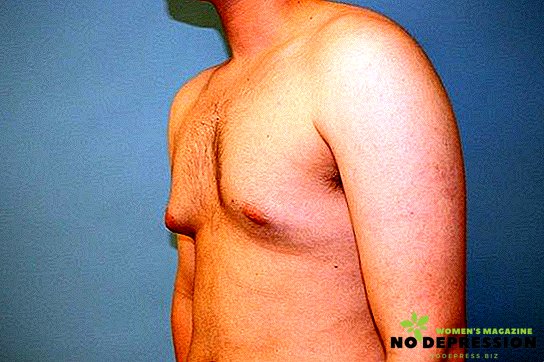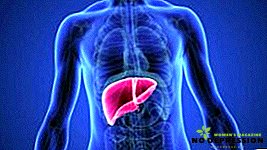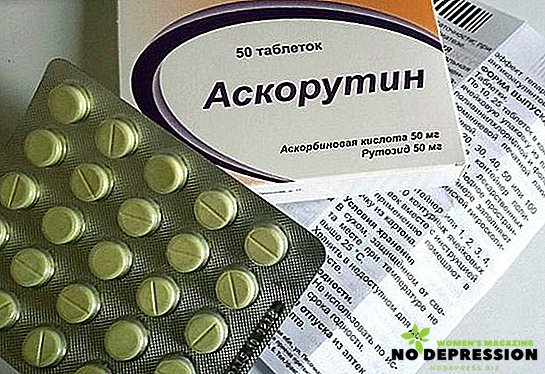Gynecomastia is an overgrowth of the breast and an increase in the breast, and the disease can be caused by both physiological and pathological causes. In some cases, it is enough to simply change the lifestyle, in others - not to do without surgical intervention.

Classification and the main causes of
Both pathological and physiological causes can lead to elevated estrogen levels.
To physiological include:
- in newborns, gynecomastia may occur as a result of estrogen entering the boy’s blood from the mother. Most often, this pathology passes within two weeks after birth;
- during puberty, which is usually associated with hormonal changes in the body. Usually disappears after a few years.
- in older men. Usually associated with age-related changes that lead to a decrease in testosterone or increased estrogen. As a rule, it is observed in men older than 55 years.
But the pathological form indicates a serious disease, the presence of which leads to hormone jumps. The causes of this pathology are many:
 testicular disease, for example, anorchia;
testicular disease, for example, anorchia;- prostate tumors;
- diseases of the oncological group: ovarian and pancreatic tumors, chorionic carcinoma;
- hermaphroditism;
- infectious diseases, including herpes, orchitis, tuberculosis;
- impaired blood flow in the groin area;
- cirrhosis of the liver;
- testicular damage;
- diabetes;
- thyroid hypertrophy;
- renal failure;
- problems with heart.
In addition, the disease of the pathological form may be associated with long-term medication:
- diuretic drugs, such as Veroshpiron;
- hormonal agents in the treatment of cancer;
- tablets for the treatment of hypertensive diseases, such as Nifedipine, Enap or Dopegita;
- cardiac glycosides, such as Digoxin;
- antibacterial or antimicrobial drugs - Trihopol or Ketoconazole;
- antiviral agents for treating HIV;
- tranquilizers, for example Relanium.
What is the danger of pathology
The physiological form of this disease is not dangerous, it regresses on its own. Discomfort can only cause the appearance, but working with a psychologist can get rid of such problems.
But with a long course of pathological gynecomastia, breast cancer can develop. Although this disease is rarely found in men, it can be just as dangerous for them as it is for women, as it has serious consequences and complications.
The appearance of discharge from the nipple, dense formation, change in the appearance of the blood - all these signs can cause the appeal to a specialist.
Gynecomastia Symptoms
The main symptom of this disease is a sharp increase in the breast. Only a doctor can determine the disease, because in some cases the growth of the gland occurs due to an increase in adipose tissue - this pathology is called false gynecomastia.
In newborns, the same symptom may occur, but the increases are minor, they do not cause discomfort to the child.
In other types of gynecomastia, the breast may expand to 15 cm in diameter, its weight will reach 200 g. If the pathology has affected only one mammary gland, this significantly increases the risk of developing cancer.

Patients with a similar disease occasionally complain of pain, but experience severe discomfort, pressure, nipple sensitivity.
If the pathology is caused by hyperprolactinemia, it may be accompanied by symptoms of CNS damage, impotence. Problems with "male power" in other forms of pathology are usually observed when estrogen levels rise or testosterone decreases. In severe forms of the disease, libido may be completely absent.
Signs of an increase in estrogen levels may include:
- change of voice timbre;
- excessive crying;
- hair loss
Also, in case of a pathological form of the disease, swelling of the testicles can be diagnosed.
Having noticed at least one of these signs, it is necessary to urgently consult a doctor.
The pathological form is divided into three stages:
- Proliferating, lasts four months. It is characterized by initial symptoms that can be stopped quickly with proper treatment.
- Intermediate (lasts up to a year). During this period, the growth of breast tissue occurs.
- Fibrioznaya, during which the chest thickens. Regression during this period is almost impossible.
Diagnostics
Determining the level of hormones in the blood will reveal the hormonal imbalance. A presumptive diagnosis will be made by the endocrinologist, having examined the patient's complaints, having conducted a survey, palpation of the lymph nodes in the neck and in the armpit. To confirm the diagnosis, an ultrasound is prescribed.
Also, thanks to a blood test can be identified: the level of testosterone, hCG and prolactin.
Before starting treatment, the patient is prescribed mammography, a biopsy with a further study of the breast tissue. And in order to exclude the presence of oncological formations, conduct:
- Ultrasound scrotum;
- tomography of the adrenal glands.

Major therapeutic interventions
If we talk about the physiological type of gynecomastia in newborns, then the pathology will pass on its own. If we talk about adolescents with such a problem, they also usually are not given medication therapy: the patient should be monitored regularly by the doctor for six months after the first symptoms appear, and with a significant increase or decrease in hormones, he will be prescribed hormone therapy. The most commonly used drugs such as Tamoxifen, Danazol or Testolactone.
But therapy for the pathological form can only be prescribed by a doctor after determining the cause of the pathology. First, the patient undergoes conservative treatment, which aims to eliminate the underlying disease. If the testosterone level is lowered, drugs based on it are prescribed.
If estradiol levels are elevated, antiestrogens are prescribed - Clomofen, Tamoxifen.
In the absence of positive changes with such therapy, for example, in the detection of tumors, surgical treatment is prescribed.
Depending on the type of pathological process and its prevalence, the following procedures are prescribed:
- endoscopic mastectomy, which is performed with a minimum increase in the mammary gland with an endoscope.
- areola-preserving mastectomy;
- mastectomy, along with liposuction, which removes excess fatty tissue.
These types of operations are fairly well tolerated, literally several days after the operation, the patient can be discharged home.
After surgery, you need to follow some recommendations: to limit physical exertion, wear corrective underwear for three weeks. After 7-10 days you can begin to work lightly, and after a month you can increase physical activity.

The average cost of treatment is from 18 to 35 thousand rubles.
What are the predictions
The physiological form of this disease is mainly characterized by a favorable outcome, it disappears without medical intervention. More than 70% of adolescents hormones are restored within 2-3 years.
Favorable prognoses are characteristic of pathology, which is caused by taking drugs, the least favorable ones are in gynecomastia, which is caused by various diseases.
Projections depend on the severity of gynecomastia, the disease that caused hormonal disruptions. And surgical techniques that are used for complex forms, in most cases, help to completely restore the normal size of the breast.
But if you do not go to a doctor in time, it can be very difficult to cure such a pathology.


 testicular disease, for example, anorchia;
testicular disease, for example, anorchia;









